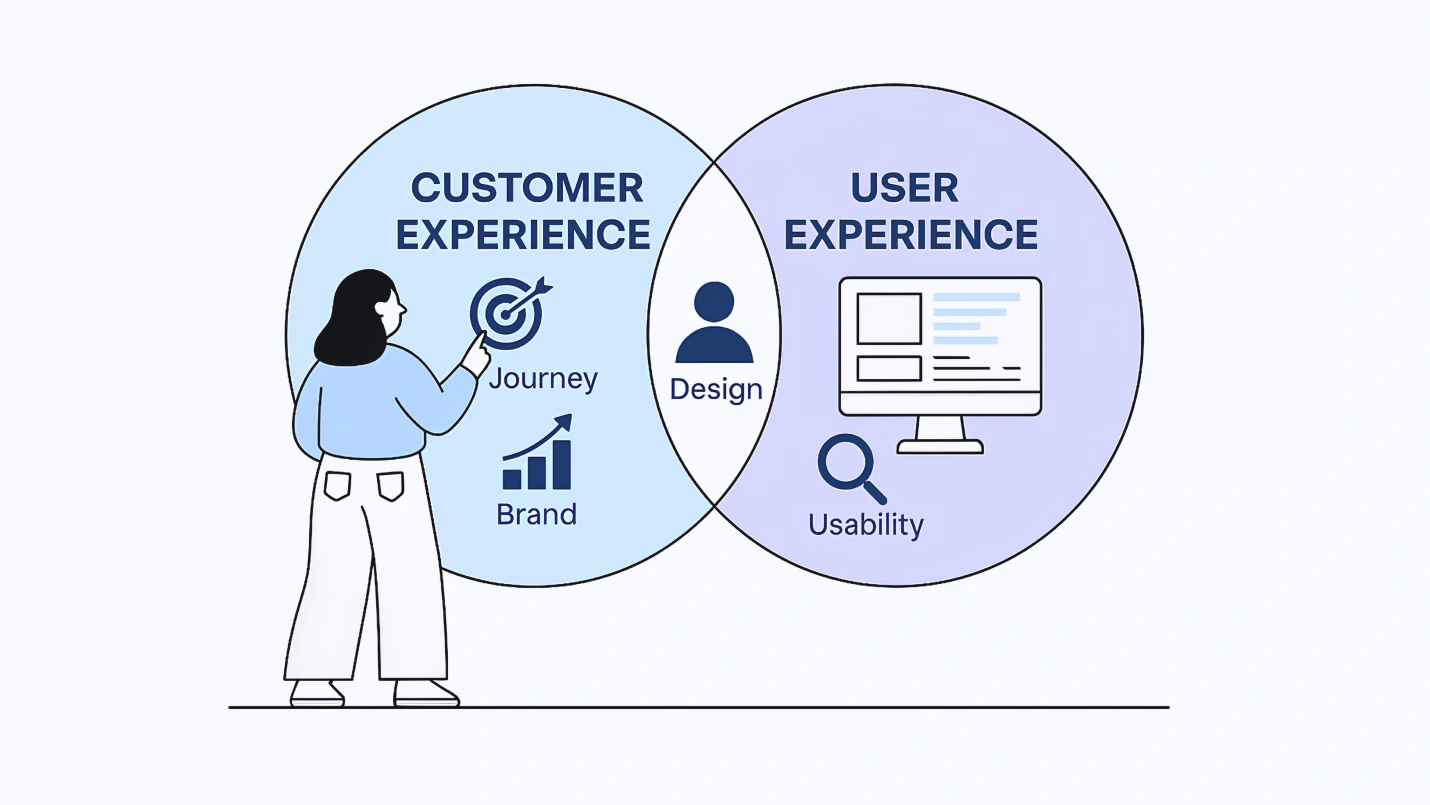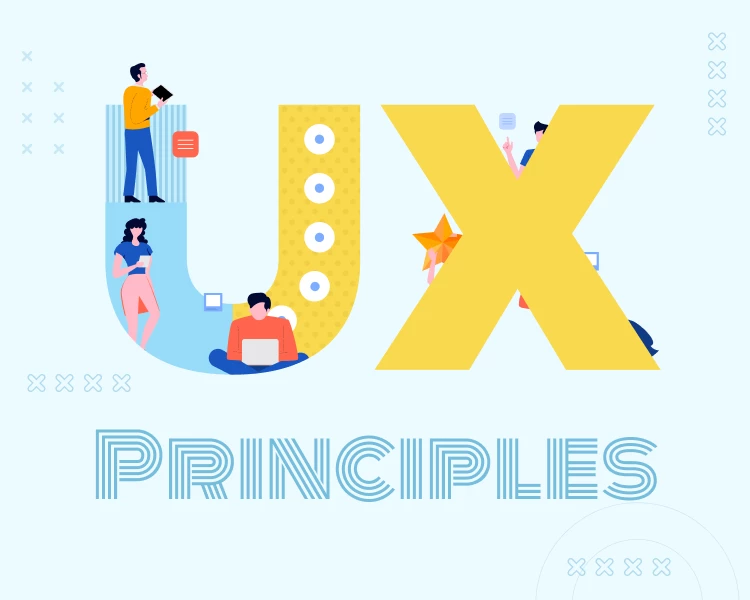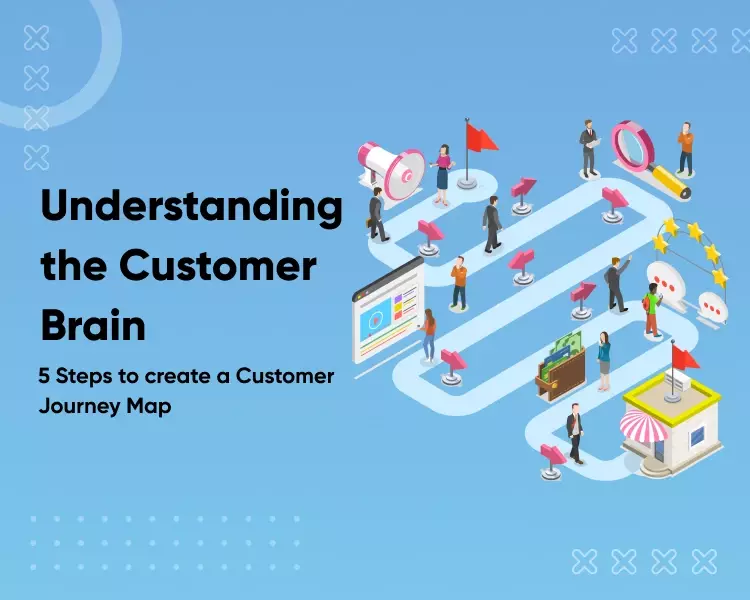How the potential customer meets a brand at every touchpoint matters, and the biggest earning for any business is human ‘attention.’ Especially attention that materializes into action. On the broader perspective, throughout a brand’s exercise to gain and retain its customers, you will hear repeated mentions of ‘customer experience’ and ‘user experience. Are the two connected? Do they overlap at any level? How would you describe the customer experience vs. the user experience story?
To begin with, a quick look at what these two entail.
Customer experience (CX) encompasses a broader experience that customers get at every touchpoint of their interaction with the brand – social media, web experience, mobile application, or human interaction.
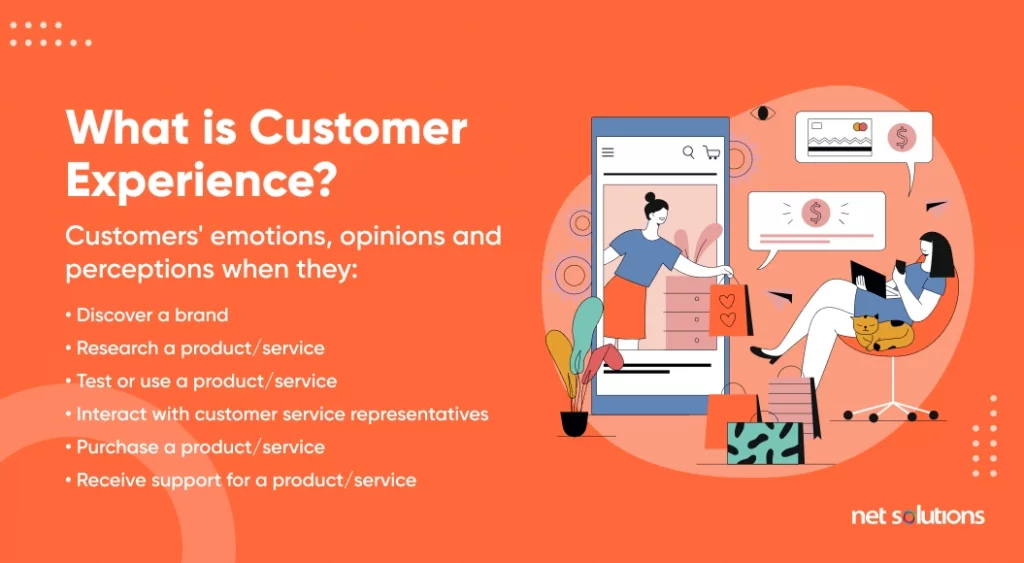
CX is how a customer relates to the brand and the organization, whether it is the first interactional impression or making purchases and becoming a repeat customer. It is a larger concept, built up of many small experiences that revolve around the logic of ‘happy customers=loyal customers,’ It includes everything that will add up to a positive experience with a brand. It is about feelings and beliefs about a business.
CX is the trust-building exercise that a brand carries out, and it not only records customer satisfaction and increases customer advocacy. It fuels continuous business growth.
User experience (UX) includes the user’s interactions with a brand’s product or service. The website navigation, for example. This deals with specific tasks for specific purposes and the corresponding experiences. It includes the ease of finding information, the smoothness of the architecture, navigation, understanding, learning, and visual structure. UX includes independent individual tasks -filling up a form.
UX comes in handy for figuring out goals for your brand and working towards increasing brand loyalty. It helps a business improve its conversion rate and is an essential component of software development.
The following is an appropriate example by Google – called the HEART framework –
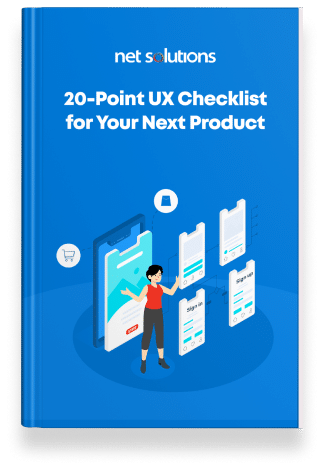
We respect your privacy. Your information is safe.
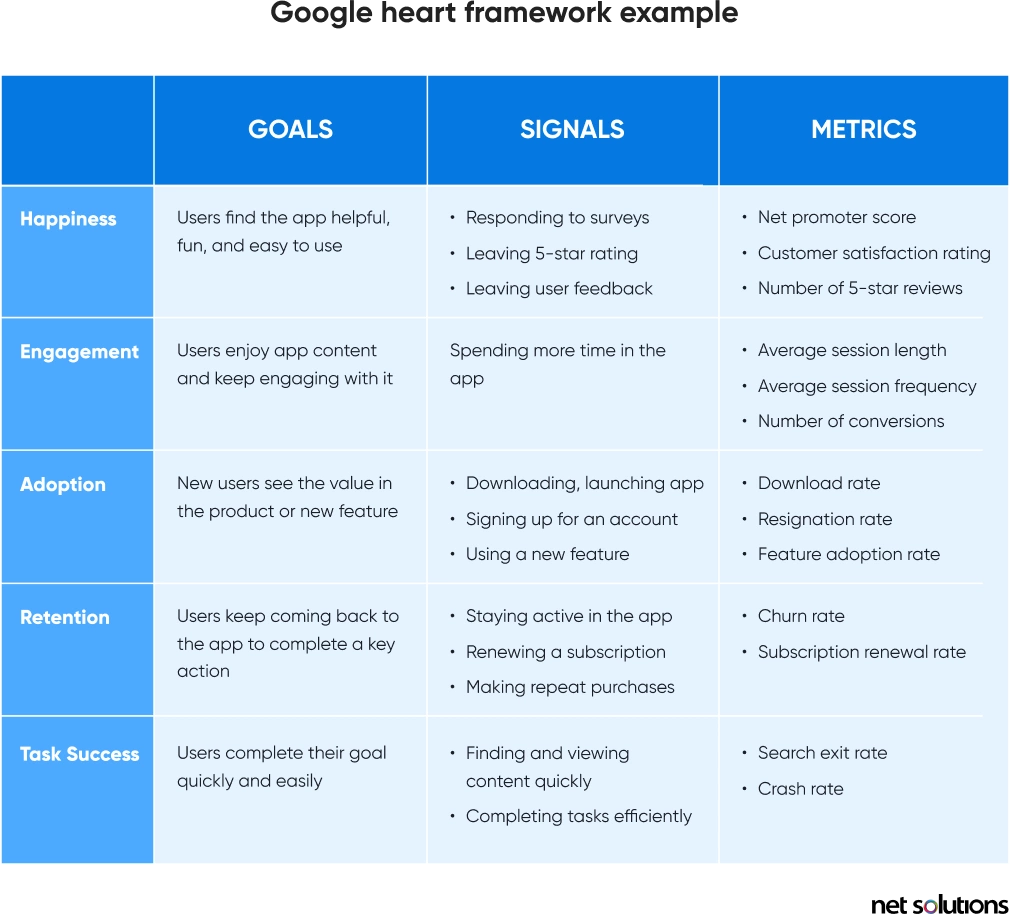
CX vs. UX – The Differences
As discussed above, customer experience (CX) is a broader term. It is all-encompassing and deals with various actions to improve the overall customer experience. On the other hand, user experience (UX) revolves around a particular product or service and its usability – what is the interface, how easy it is to use, and the intuitiveness levels.
Let’s try to understand the differences between CX and UX. For better clarity, we’ve segregated the differences in the following sub-headings-
1. Goals and Objectives
CX aims to create a wave of customer satisfaction at every stage of a user’s journey. It will also take care of the feedback a customer wants to convey at any point in his journey. It is about creating a positive impact on the brand with customers and will look at all channels of a brand’s experience.
“You’ve got to start with the customer experience and work back towards the technology – not the other way around.”Steve Jobs
UX will focus on flawless, smooth product experiences. The focus here is to resolve customer issues at various levels. Thus it is creating individual product interactions to create positive experiences while prioritizing one aspect/product.
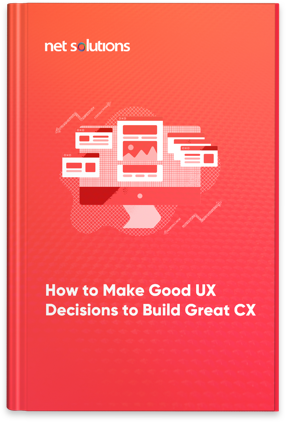
We respect your privacy. Your information is safe.
2. The Background and audience
CX will need teams from varied segments to participate. These could include people from marketing, customer service, sales, and business analysts. Plus, it would involve audiences at a broader level – bigger groups and more comprehensive coverage- to check how people perceive the brand’s product or service.
UX works on teams from specific teams like the technical, design, or even people specializing in psychology. Specialists look at particular aspects of the experience by targeting more minor groups.
3. Metrics
CX focuses on what the customers feel overall. It is about how satisfied the customers are and whether they would recommend a brand to others. The metrics for measuring customer satisfaction are –
- Customer satisfaction – On a scale of 1 to 5, the customer satisfaction scores help measure customer satisfaction. These can adapt to the company’s needs and eventually reflect whether the customer service department is working smoothly or not. It summarizes the degree of satisfaction that a customer has with a brand.
- Net Promoter Score or NPS – is a measure of customer loyalty and reflects whether customers are willing to tell others about the brand. This is widely used to evaluate customer feedback and can help assess revenue gain or loss.
- Churn rate and retention rate – This helps evaluate how many customers the business loses in a particular period and how many customers the business can retain over a defined period.
- Customer effort score – is a metric often used by businesses to gauge how easy or challenging it is for customers to solve any issue. It will also try to assess why the particular problem has occurred and how it can be solved.
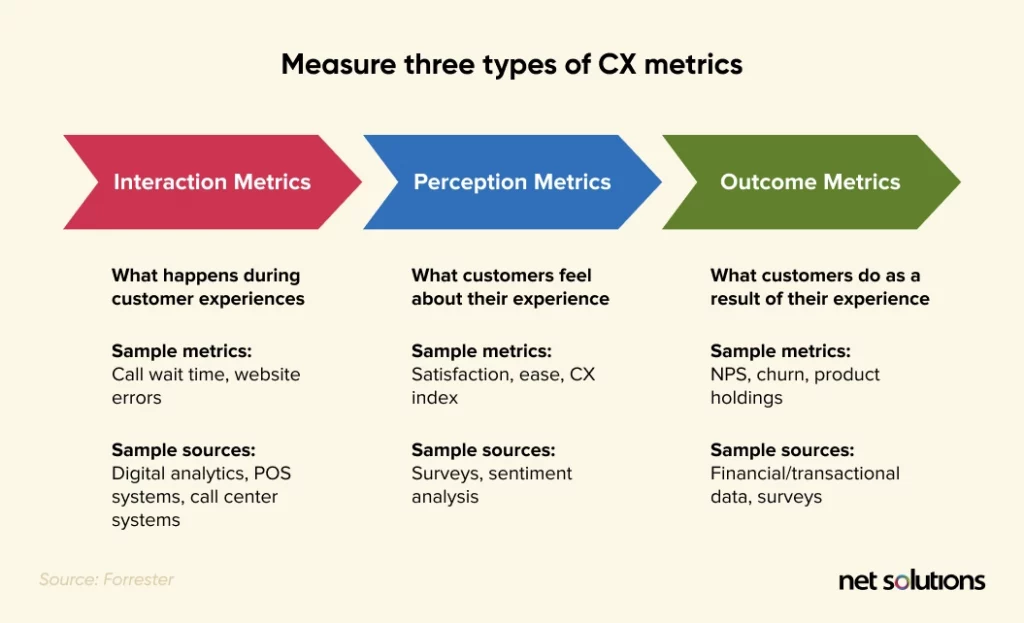
UX essentially tests usability and can be measured by the following metrics-
- Task time – the time taken for a user to finish a task or accomplish a particular goal, say, how long it takes to find the Help section on the website, or the Contact page, for example.
- Clicks to completion time – tells an evaluation team how many clicks it took for a user to complete a particular task.
- Adoption rate – tells us the percentage between the new users (for a product or service) and all users.
Success rate – the number of users who finish a particular task or goal to reach the destination. - Abandonment rate – the percentage of users who opted to leave a task before completing it.
- Loading speed is the time the brand website or application takes to load/start.
Many companies have often mentioned that they don’t treat Cx and UX as separate categories. But in fact, they are different. Look at the table below to get a quick glimpse of the differences –
| User Experience | Customer Experience |
|---|---|
| Works on a single interaction point | Builds the entire experience journey |
| Product experience | Sales process – before, during, and after |
| ssue management at a specific point | Overall experience throughout the brand association |
| Done by specific teams | Under multi-departmental teams |
| Behavioural metrics – task, abandonment, success, clicks | Attitudanal metrics – interaction, perception, outcome |
Scope of Relationships
Depending on the point of contact and the expected response, the customer can relate at various levels and in multiple forms for any brand. This is how CX and UX are placed at each level –
1. Interaction level
This is a person’s experience on a single device to perform a specific task. At this level, UX will play a significant part in the digital experience design. At the digital level, UX designers work at this level designing the interface for applications or websites. However, this will work not just for digital platforms but also for actual human-to-human interactions. For example, a customer receiving help on the phone or a person trying to get his claim his insurance. These are single points, small interactions, and are one aspect of the customer-brand relationship and the forte of User experience design agency.
2. Journey level
This is where we start understanding what a customer journey is. We are talking about an end-to-end process. One could have multiple channels of interaction. This is about delivering consistent messages at every level of interaction – the web, mobile applications, emails, online chatting, and phone calls. Cross-channel interactions are essential, as is a synchronized tone throughout all interactions. For customers to switch between channels with the same experience levels, strategic back-end technology integration needs to be integrated. This is, therefore, a mix of CX and UX aspects.
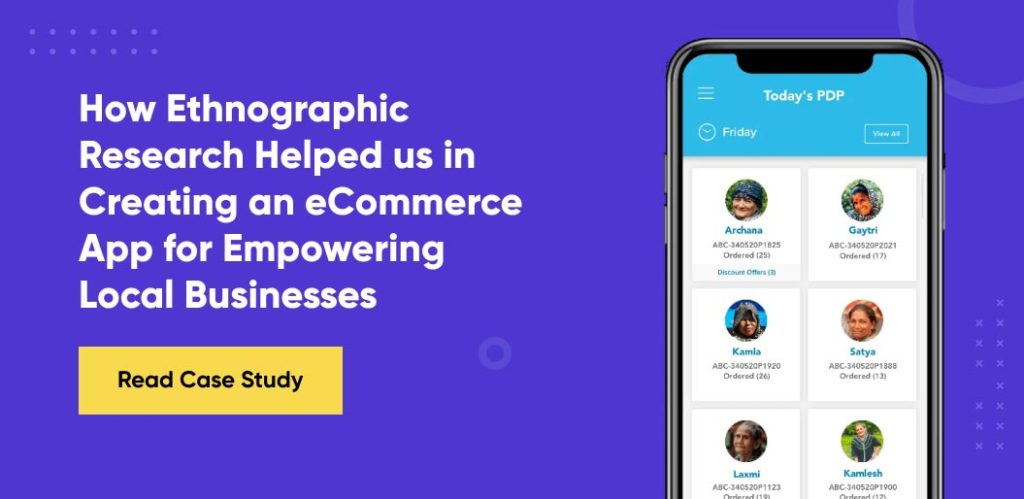
3. Relationship level
This is the customer experience aspect that a person has with the brand. We talk of the lifetime experience of a customer with an organization and then his overall impression of that company. It includes the total experience of research, buying, using products, and receiving support. Let’s say a customer subscribes to software, uses it, seeks help for problems, receives newsletters, and interacts with the business on calls. Various touchpoint actions are woven together here – advertisements, product offers, call center activities, etc. and support the transition from one aspect to another.
The three levels of UX: Interaction level UX influences journey-level UX and relationship level. Each level has its constraints and goals. Organizations should seek to deliver good UX at each level.
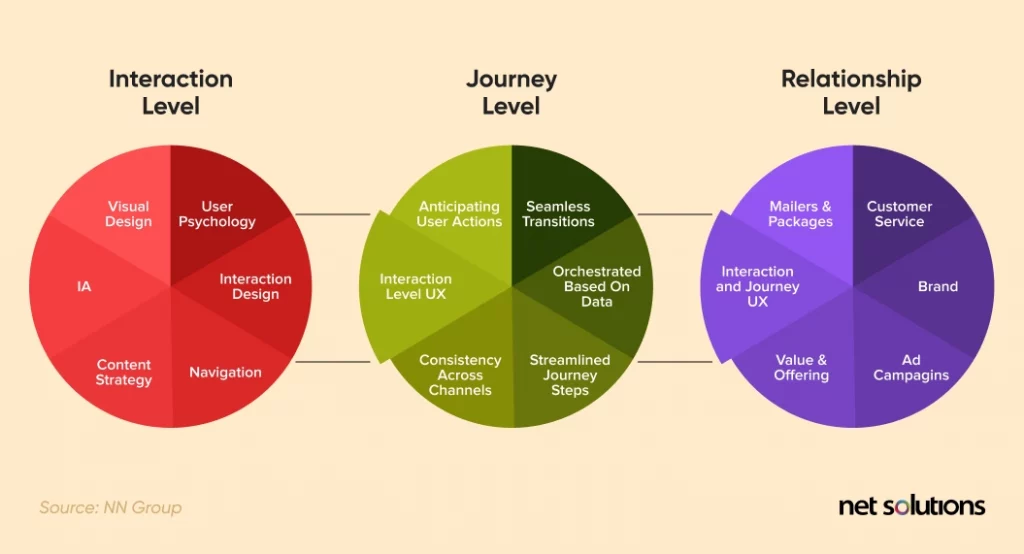
The Similarities Between Customer Experience and User Experience
Even though UX seems more about products, CX and UX have people at the heart of all their efforts.
Let’s also remember that omnichannel experiences are the dominant factor now. Customers expect and want a seamless experience. For them, whether it is a brand’s website or app or the physical store, the identity remains ONE.
AI and IoT dominate today’s world. Brands need to be considered together and not in siloed versions. That is the customer’s expectation.
UX and CX will work together if a brand wants to create a smooth, frictionless customer journey. Businesses use customer journey maps to chart a customer’s experience with them.
Is UX a part of CX?
Even though both UX and CX make two different aspects as their central operating factors, UX forms a segment of the broader scope of CX.
UX is a part of the whole experience that CX works for. Easily understood as below-
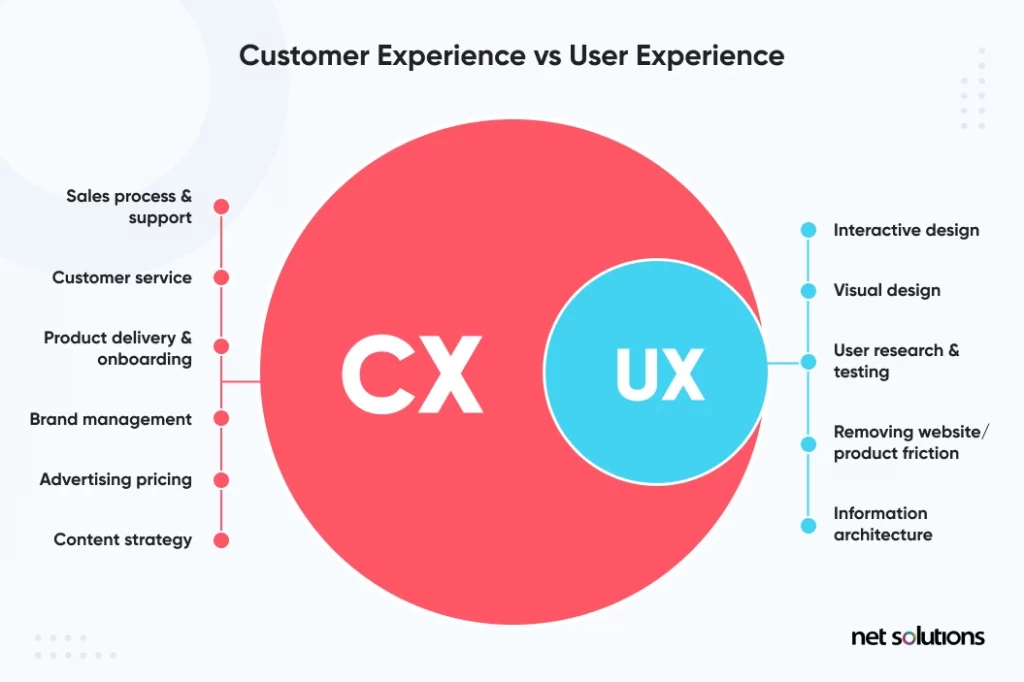
UX looks at a single-point tech perspective or a product perspective. CX, on the other hand, will signify the entire business experience. It goes beyond functionality and usability and extends to how customers relate to the totality of the brand.
How Net Solutions Tapped into the Power of User Experience to Build Captiv8

As an AI-charged platform that t connects companies like Honda and Dr. Pepper with internet influencers, Captiv8 had a challenge in taking brands to a hard-to-reach millennial customer base. They hoped to communicate with online content creators/influencers who would pitch their product to specific demographics. Over the years, Net Solutions has helped Captiv8 become the go-to network for content creators interested in monetizing their channels and brands wanting to leverage the power of influencer marketing.
Net Solutions was responsible for building the brand – from the logo to the marketing website. The challenge was that brand managers and millennial content creators were two varied audiences.
Captiv8 engaged Net Solutions to attract successful influencers and empowers brands to manage all aspects of campaign workflow, content amplification, influencer payments, and reporting campaign metrics. Net Solutions helped Captiv8 manage the-
- HubSpot Marketing Campaigns
- Brand & Collateral Design (logos, color swatches, usage guides, and more for the company and its sub-brands).
- Digital Marketing Asset Development (marketing websites, landing pages, one-page websites, FB page, Twitter profiles)
- Marketing Collaterals for Events & Sales Calls (like t-shirts, one-sheets, flyers, whitepapers, e-books, newsletters, caricatures, illustrations, etc.)
- Mobile App
In this process, Net Solutions became a partner to the brand in building a meaningful user experience journey by creating a platform that appealed to advertisers and influencers. The collaboration design between Net Solutions and the brand ensured the integration of flawless design with a seamless customer experience, which has been Net Solution’s significant contribution to the brand.
Frequently Asked Questions
These differences revolve around an interactional interface, a one-time usability experience, and a holistic brand experience. User Interface (UI) refers to the interface that a user will find at a particular point in the journey with a brand. UX or user experience is more personal and related to feelings while interacting at a specific point. Customer experience or CX is a customer’s overall experience, from discovering a brand to post-purchase services.
A Customer experience is how customers engage with a brand and what they feel about those interactions. In contrast, customer service is a part of Customer Relationship Management that assists the customers before, during, and after purchase. Customer service is a part of the overall customer experience.
While general perception assumes that UX is only concerned with digital experiences, it is physical too. Since it emphasizes the overall user feeling, it can be physical too – a customer filling up a withdrawal form in a bank is also a ‘user experience.
When in trouble, customers will turn to the CX teams. They will provide valuable insights into all problems. The UX team will depend on the CX team for all the core base information to integrate customer feedback into realistic requirements. Like the UX team, the CX team will spin creative solutions to address user

